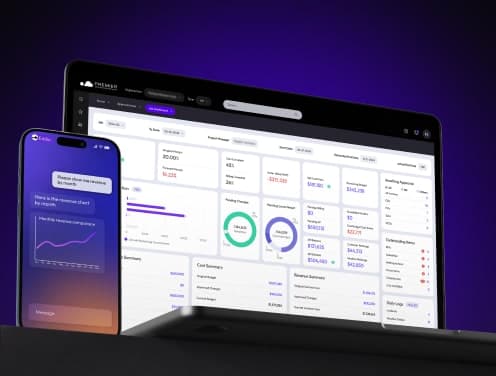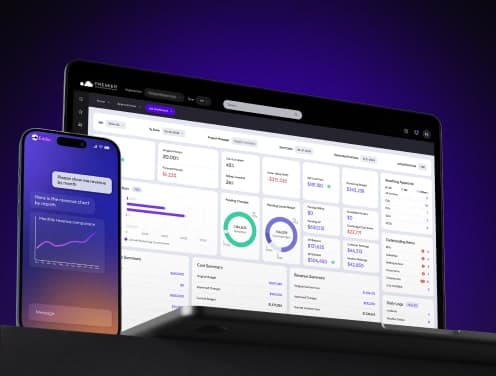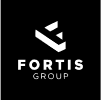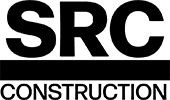
How AI is Transforming the Construction Industry, From Blueprints to Build
AI's future in the construction industry is taking shape faster than ever. The market will grow from $3.99 billion in 2024 to $11.85 billion by 2029, achieving a remarkable annual growth rate of 24.31%. Digital tools have become common at construction sites, yet this change extends way beyond the reach and influence of simple software adoption. AI technologies now revolutionize every phase of construction projects, from design conception to final inspection.
AI in construction can boost productivity by up to 20% through improved project planning and resource management. Construction safety has seen significant improvements too. AI tools have reduced workplace accidents by up to 25%, which saves lives and reduces insurance costs. Boston Consulting Group projects that AI could automate up to 30% of construction work by 2025. This change will dramatically affect productivity and project timelines.
These changes bring real benefits to your projects. AI helps prevent mistakes that get pricey. Project cost overruns drop by up to 30% when predictive analytics identify potential risks early. On top of that, it improves project visibility and keeps teams updated about site conditions, potentially reducing costs by 29%. Premier's construction management software showcases how AI and predictive intelligence are now available tools rather than distant concepts.
This piece explores AI's impact on the construction industry at every development stage. AI-powered design tools, autonomous equipment, and environmentally responsible building practices are the practical applications that change how structures take shape. AI's future in construction delivers more than impressive technology – it creates better, safer, and more efficient building processes.
AI-Powered Design and Preconstruction Planning
AI technology now reshapes how construction projects move from concept to reality. Traditional preconstruction planning used manual processes that led to errors and inefficiencies. Artificial intelligence now offers powerful alternatives that make workflows efficient and boost decision-making in these vital early stages.
Generative Design Tools for Early-Stage Modeling
Generative design AI changes the way architectural and structural models come together. You don't need to draw each element by hand anymore. The AI creates multiple optimized solutions after you input your design goals and constraints. This system can review thousands of design possibilities at once, something you can't do with regular methods.
These systems take parameters like material limitations, budget constraints, and building codes. The AI then creates designs that meet all requirements while making the most of:
- Structural integrity
- Material efficiency
- Energy performance
- Affordable solutions
Autodesk Fusion stands out as a tool that makes this exploration of possibilities happen. Architects and engineers can create lightweight, strong, and cost-efficient components as the technology reviews many manufacturing-ready outcomes.
McKinsey estimates that generative AI could add between $2.60 to $4.40 trillion in productivity value across industries. Construction teams can explore designs faster and expand creative boundaries with these tools.
Generative design also saves materials by suggesting structures that stay strong while using less material. Many leading car manufacturers already use this technology. They make lighter components, combine multiple parts into one, and get better performance.
AI Integration with Building Information Modeling (BIM)
Building Information Modeling has changed construction planning since the early 2000s. AI now boosts BIM's capabilities through automated analysis and smart processing.
AI algorithms automatically spot conflicts between different building elements in clash detection. Architects and engineers can fix issues quickly that might get pricey during construction.
AI-powered BIM runs energy performance simulations too. It looks at building orientation, envelope design, and HVAC systems to find the most energy-efficient designs. Project teams can make smart decisions that lead to better sustainability.
AI integration with BIM also makes cost estimation more precise. Algorithms look at building materials and labor costs to create exact estimates. This accuracy cuts down budget uncertainties and helps with financial planning.
The technology helps with quality control by analyzing sensor data to catch problems early. AI can also look at site layouts, equipment availability, and labor schedules to create efficient construction timelines.
BIM with AI integration creates a shared platform that exceeds boundaries between different disciplines. Teams communicate better and make decisions faster throughout the project.
Feasibility Analysis Using Predictive Algorithms
Feasibility studies often determine if projects move forward in preconstruction planning. AI-powered tools now run these assessments faster and more accurately.
AI algorithms look at big datasets of financial information, market trends, and environmental effects to review project viability. Teams get better insights than they could with traditional manual methods.
Premier's construction management software shows how AI and predictive intelligence help teams make data-driven decisions earlier. Their tools analyze material costs, labor availability, and site conditions to spot potential challenges before they show up.
AI-driven feasibility analysis offers:
- Faster assessments, cutting analysis time from days to hours
- More accurate risk identification
- Data-driven decision support
- Detailed review of alternatives
A new framework pairs AI-driven predictive models with agile project management methods to improve resource use and project efficiency. Teams can handle uncertainty better during early planning stages.
AI's role in construction keeps growing faster. These technologies will blend even more with design tools, BIM platforms, and predictive analytics as they mature. The result will be more efficient, sustainable, and affordable building processes.
Smart Scheduling and Resource Allocation with AI
Construction scheduling used to be a manual process that took too much time. AI has changed everything with data-driven approaches that make timelines and resources better than ever before.
AI-Driven Construction Scheduling Platforms
Complex construction jobs allowed experienced project managers to create one or two schedule iterations traditionally. AI-powered platforms can now generate and assess millions of scheduling scenarios within hours. This technology has turned planning into a complete exploration of what's possible.
ALICE Technologies shows how far we've come. This AI-powered platform lets users explore many scenarios and create multiple workable schedules quickly. The software brings together construction schedule, cost, and scope for every solution it generates. This creates a single platform where stakeholders work together.
The numbers speak for themselves. Companies that use ALICE see a 17% reduction in construction project duration. They save 14% on labor costs and 12% on equipment costs. The platform achieves these results by:
- Making planning processes automatic
- Getting the most from available resources
- Spotting potential problems as they happen
- Adjusting schedules fast when things change
Prediction3D offers another great option. Users can upload BIM models to automatically create complete construction schedules and take-off estimates within minutes. This saves users an average of 36 hours each month.
Labor and Equipment Optimization via Machine Learning
Machine learning algorithms now predict construction crew productivity with amazing accuracy. These systems look at past data from daily work reports. They analyze how work progressed, what the weather was like, how many resources were used, and how crews were put together.
People used to estimate construction workforce productivity based on experience, expert opinions, and production rate charts. This often led to wrong judgments because there wasn't enough information. Machine learning provides a better way by understanding complex relationships in large amounts of detailed data.
AI systems match the right people to the right tasks at the perfect time. They look at workforce skills, availability, and project needs. This boosts productivity and cuts down on wasted time.
AI also makes equipment usage better by studying patterns and figuring out the best deployment strategies. Equipment lasts longer and doesn't sit unused.
Premier's construction management software uses AI and predictive intelligence to help companies use resources better. Their tools study project data to find waste and suggest ways to cut costs while doing better work.
Reducing Project Overruns with Predictive Forecasting
Construction projects face big challenges. Up to 80% run late, and 9 out of 10 go over budget by 15-28%. Predictive analytics helps solve these problems. Project managers can spot risks early by analyzing trends, past data, and current information.
Raw project data becomes practical early warnings through predictive analytics. These systems spot patterns like delays that keep happening, not having enough workers, or sudden material cost increases. Project teams can fix problems before they get worse. Companies that use predictive analytics cut overruns by up to 30% and make financial forecasts 25% more accurate.
AI does more than find problems - it shows where to put resources to get the best results. Managers can make backup plans, use resources wisely, and keep better control of project money.
These systems get better over time. More data means more accurate predictions, which leads to better project strategies.
AI-powered scheduling and resource allocation have created a radical alteration from reactive to proactive construction management. These systems reshape how the industry delivers projects by predicting challenges early and making the best use of resources based on data instead of gut feelings.
AI in Cost Estimation and Budget Control
Cost estimation in construction used to be a tedious process prone to errors. AI technologies now revolutionize how teams prepare, track, and manage estimates throughout project lifecycles.
Automated Quantity Takeoffs and Cost Projections
Material quantification, known as takeoffs, remains one of the most time-consuming parts of preconstruction. Estimators need 45-60 minutes to analyze each plan page. Large projects with hundreds of sheets can take weeks to process. AI-powered solutions now complete this task in seconds.
Modern AI estimating tools cut takeoff time by about 80%. Some platforms process entire sheets in just 3-10 seconds. This speed boost saves estimators about 90 minutes per sheet. These systems also deliver exceptional accuracy, usually 97-99%, which reduces the human errors common in manual calculations.
These AI systems work through:
- Deep learning models that recognize construction elements automatically
- Machine learning algorithms that compare costs across similar projects
- Adaptive systems that improve with continued use
- Automated symbol detection to count specific elements in plans
The financial benefits are substantial. AI-driven design can cut construction costs by up to 20% and reduce material waste by 50%. This automation lets estimators focus on valuable tasks like scoping, pricing, and value engineering instead of tedious calculations.
Premier's construction management software uses AI to simplify takeoff processes through automated quantification. Their system spots patterns in blueprints and extracts quantities quickly, which helps contractors create more competitive bids with less effort.
A construction executive stated: "Togal.AI has automated the takeoff process and made our days much more efficient". Another contractor reports that with AI assistance, "we get 90% of our take off done in a matter of minutes and not hours".
Real-Time Budget Tracking with AI Dashboards
AI adds value beyond initial estimates through advanced budget monitoring. Old budget tracking relied on periodic manual updates that often revealed problems too late. AI-powered systems now provide constant oversight with proactive alerts.
AI budget tracking platforms connect to over 100 data sources and pull information from different systems automatically. This integration provides:
- Live monitoring that warns managers about potential overspending
- Predictive analytics that forecast future spending patterns
- Automated notifications when expenses approach set limits
- Updated dashboards showing the latest financial data
AI makes complex cost data more available to stakeholders through visual tools like charts and graphs. This visual approach improves financial communication across teams.
The results speak for themselves. AI budgeting agents finish routine reports and forecasts in under a minute instead of hours. These agents categorize expenses, simplify reporting processes, and update records automatically.
Companies that use AI for budget tracking report less workload. This allows their financial teams to focus on strategy rather than data processing. One industry expert notes, "This isn't just about saving time, it completely changes how financial teams operate, shifting focus from number-crunching to strategic planning".
Premier's AI and predictive intelligence features demonstrate this approach in their construction management platform. Their system analyzes spending patterns to spot potential budget issues early, which helps teams solve problems before they grow.
Cost estimation has evolved from educated guesses into an analytical, live process. AI integration helps construction professionals make better financial decisions and reduces the uncertainty that used to plague the industry.
Enhancing On-Site Safety with Computer Vision
Construction sites are among the most dangerous workplaces worldwide. The industry employs just 6% of the U.S. workforce but accounts for nearly 20% of all work-related fatalities. AI and computer vision technologies now revolutionize safety through automated monitoring and early warning systems.
Live Hazard Detection Using AI Cameras
AI-powered camera systems watch construction sites through carefully placed cameras. They spot safety violations human supervisors might miss. These systems work with impressive accuracy, detecting ladders with 97% precision and 93% recall. They can identify human poses with 96% precision and 95% recall.
The technology does more than just watch. AI cameras detect:
- Missing personal protective equipment
- Workers in unauthorized areas
- Unsafe proximity to heavy machinery
- Improper equipment usage
- Potential collision hazards
Site managers get immediate alerts when violations occur, which allows quick action before accidents happen. This live monitoring capability changes safety management from reactive to proactive.
"Using computer vision, site managers could more easily identify safety violations or risky activity on a job site," notes an industry expert. The system aims to create awareness that promotes safer work habits rather than punish workers.
To cite an instance, AI cameras that spot missing safety barriers or improper ladder usage review the situation through an ontologies model. This determines if conditions meet regulatory standards with 95% precision and 98% recall in safety assessments.
Wearable AI Devices for Worker Safety Monitoring
Wearable tech brings new advances in construction safety. These devices track vital signs, environmental conditions, and worker movements to stop accidents before they occur.
Smart helmets with sensors and augmented reality give workers data about structural integrity and temperature changes. They increase awareness of surroundings. These devices help workers avoid dangers from falling objects or equipment failures.
Health monitors track vital signs like heart rate and breathing. Workers get alerts when they show signs of fatigue or heat stress. This health tracking becomes valuable during extreme temperatures or demanding tasks where exhaustion often causes accidents.
Exoskeletons, while still new, cut physical strain by boosting strength and endurance. Research shows they decrease work load, fatigue and improve posture. Workers who paint and weld report less shoulder pain and higher productivity.
The devices connect to a wireless mesh infrastructure through an Internet of Things network and integrate with central monitoring systems. Workers receive messages, warnings, and alarms while their locations stay tracked.
Predictive Safety Analytics from Historical Data
AI now learns from past safety data to prevent future incidents. Models spot high-risk scenarios by finding patterns in previous accidents, near-misses, and environmental factors.
Safety teams use trend analysis from past incidents to forecast potential hazards. Understanding links between environment, equipment, and human factors creates an all-encompassing safety approach.
Companies gain significant advantages. Predictive analytics helps them:
- Spot emerging issues before harm occurs
- Focus resources on highest risk areas
- Create targeted safety training programs
- Keep improving safety protocols
Premier's construction management software uses AI and predictive intelligence to analyze safety patterns across projects. Teams can take preventive action by identifying potential hazards from historical data.
The models excel at tackling worker fatigue, a major cause of construction accidents. Work schedules improve with insights about work patterns and environmental factors to lower risks.
AI's future in construction safety shows great promise. These technologies will merge wearable tech, computer vision, and predictive analytics to create construction sites that protect workers instead of just responding to incidents.
AI for Construction Monitoring and Quality Control
Construction projects face major quality control challenges. Poor monitoring and supervision directly impact project outcomes. Modern AI technologies give us new ways to track progress and maintain high standards throughout construction projects.
Drone-Based Progress Tracking and Site Mapping
AI-powered drones are a great way to get construction site data. These flying devices capture high-resolution images and data that give us detailed views we couldn't get before without expensive aircraft. Project managers can create visual timelines and track construction progress with amazing accuracy through regular drone flights.
These smart drones handle several monitoring tasks at once:
- Conducting aerial surveys to generate accurate site maps
- Creating time-lapse videos showing construction progress
- Producing 3D models that can be compared against building plans
- Spotting potential hazards or issues that need attention
Teams can turn drone data into detailed orthomosaic maps and 3D models using software like PIX4Dcloud. This lets them measure volumes, analyze excavation profiles, and track quantities without visiting the site.
"Magil finds the ability for team members to annotate and leave comments directly on the images and models particularly useful for highlighting areas of interest or concern, facilitating clear and effective communication," reports one case study. This real-time teamwork helps catch plan deviations quickly, since teams typically check only 5%-10% of construction plans.
Defect Detection Using Deep Learning Models
Building inspections used to be slow, difficult, expensive, and often risky, especially at heights or on roofs. Deep learning models now spot structural issues automatically with remarkable accuracy.
Convolutional neural networks (CNN) are great at finding various defects including:
- Cracks in concrete surfaces and structures
- Moisture-related issues like mold and stains
- Paint deterioration caused by environmental factors
These AI systems work really well, one study showed 76.4% precision for crack detection and 89.9% for exposed bars. Using transfer learning with pre-trained models like VGG-16 makes these systems even more accurate while cutting costs.
Contractors and building owners now get faster, more accurate inspections. AI constantly analyzes images from site cameras and drones to flag problems before they become expensive mistakes. Premier's construction management software uses similar AI features to help teams catch quality issues early.
Compliance Verification with AI-Powered Inspections
Modern construction inspection software coordinates site monitoring automatically for real-time quality checks. This automation makes quality control procedures much more efficient.
AI-powered tools improve quality even before construction starts. The software checks designs and 3D building models for potential issues, which reduces the need for rework. AI sensors and cameras make sure work meets quality standards during construction.
AI systems compare drone surveys with blueprints to find any mismatches. Companies like SiteAware use this method to scan construction sites on their own and create accurate digital twins of the actual built environment.
Inspection tools will become even more automated in the future. "Further into the future, instead of mounting sensors on handheld devices, they will be fitted to robots, or perhaps to autonomous vehicles. Inspections will be highly productive and comprehensive while removing all risks taken by humans," notes one industry report.
Premier's AI and predictive intelligence features show us what's possible. Their system helps project managers check as-built conditions against design requirements to confirm compliance and improve project quality with minimal human input.
Autonomous Equipment and Robotics in Construction
AI-powered robots and autonomous equipment are changing construction work faster than ever. These machines boost productivity and keep workers safer as they handle tasks from laying bricks to moving materials around job sites.
AI-Controlled Bricklaying and Concrete Pouring Robots
The construction industry has seen remarkable improvements through bricklaying robots. Hadrian X stands out as the world's first mobile robotic bricklaying machine that builds house walls in just a day. The system reads 3D CAD models and reduces waste while making sites safer. Dynamic Stabilization Technology helps the robot adjust for vibration live and place blocks precisely.
These robots work better than humans and can lay up to 3,000 bricks each day. The Conit Runner moves across wet concrete at 10 mph to add structural grooves and measure concrete hardness for perfect finishing. Itone reports show this robot needs 30% less rebar reinforcement and makes construction 85% faster.
Self-Driving Vehicles for Material Transport
Construction sites provide a controlled environment for self-driving vehicles, unlike public roads with their complex challenges. These machines work best in these contained settings.
Industry leader Caterpillar has put almost 600 autonomous trucks to work in mines worldwide. GPS, LiDAR sensors, and inertial measurement units help these vehicles find their exact position within set boundaries. The benefits are clear - safer operations, better worker output since one person manages multiple machines, and round-the-clock work that keeps projects on schedule.
Cobots for Repetitive and Hazardous Tasks
Collaborative robots or cobots work with humans on dangerous or repetitive jobs. Raise Robotics uses two UR20 robot arms to install fasteners for glass façade panels on tall buildings. Workers stay safe as these robots eliminate the need for safety rigging while working at heights.
The results speak for themselves:
- Workers are 3 times more productive
- Cost recovery happens within one 13-floor project
- Installation accuracy stays within ±3/16 of an inch
- Robots work in temperatures from -20°F to 120°F
Premier's construction management software with AI and predictive intelligence helps companies use these robotic systems well. The software analyzes performance data and optimizes deployment strategies. Autonomous equipment improves entire workflows and makes construction faster, safer, and more precise.
Sustainable Building Through AI Optimization
Buildings contribute almost one-fifth of global carbon emissions. AI technologies now offer remarkable ways to reduce environmental damage throughout a building's life.
Energy Efficiency Modeling with AI
AI helps architects and engineers create energy-efficient building designs before construction begins. AI acts as a surrogate model that quickly evaluates design options without heavy computing resources. These tools look at factors like building orientation, facade design, and material choices to find the most energy-efficient configurations.
AI creates detailed digital replicas of existing buildings. These replicas simulate energy needs under various conditions and guide modernization decisions to meet net-zero goals. Research by Boston Consulting Group shows that AI-driven energy modeling cuts operating energy needs by up to 20%.
Material Waste Reduction via Predictive Analytics
The construction sector produces over 30% of global solid waste. About 35% ends up in landfills even though 75% could be reused. AI tackles this problem through exact material calculations and waste predictions.
Machine learning algorithms study project data to forecast waste across building components and materials. XGBoost algorithms have achieved waste predictions with over 98% accuracy in many cases. AI also makes material use more efficient by:
- Preventing excess orders through precise quantity predictions
- Finding ways to reuse or recycle materials
- Monitoring environmental practices in supply chains
Smart HVAC and Lighting Systems Powered by AI
HVAC systems use 35-65% of a building's energy. AI-enhanced HVAC solutions use live data from sensors to adjust operations based on occupancy, weather, and building features.
A study of 87 educational buildings revealed that AI-powered HVAC systems cut district heating use by 3.12% and electricity consumption by 8.93% from 2019 to 2023. Some commercial buildings report energy savings up to 25% within three months.
AI-driven lighting systems adjust to occupancy and natural light, which reduces energy use by up to 35%. Premier's AI construction software offers features that optimize building systems. This helps teams balance energy efficiency with comfort throughout the project's life.
Challenges in AI Adoption Across the Construction Industry
AI offers amazing benefits for construction, but companies face major challenges with adoption. Research shows all but one of these AI leaders don't deal very well with showing their organizations the value of this technology.
Workforce Readiness and Digital Literacy Gaps
The construction industry lacks skilled professionals. Companies need people who can develop, use, and maintain AI systems. About 37% of managers remain doubtful or hesitant about AI technologies because they don't understand these new tools well.
Resistance comes from fear of change. Workers worry about losing their jobs or feel uneasy with new methods. Companies need complete training programs that clearly show how AI boosts human capabilities rather than replacing them.
One source states, "Employees' lack of digital and AI literacy can hinder their adoption and utilization of new technologies". Construction companies must invest in training current workers and hire AI experts who can lead implementation projects.
Infrastructure and Connectivity Limitations
Construction sites need reliable technology infrastructure for AI implementation. Many sites don't work well with unstable power and internet connections, especially in remote areas.
AI systems need immediate data from sensors and machines, which makes smooth connections crucial. 4G networks have helped solve some connection problems, but 5G networks provide better reliability through faster data speeds, less delay, and support for more devices.
Cost Barriers and ROI Uncertainty
AI requires big upfront investments in hardware, software, and training. Small and medium-sized construction companies with tight budgets find this challenging.
Data privacy concerns (25.7%), problems with existing tool integration (22.8%), and high original costs (18.8%) lead the adoption barriers. Companies also struggle to show clear returns on investment because benefits take longer to appear than costs.
Premier's construction management software with AI features helps solve these challenges. The software provides expandable solutions with clearer ROI paths, so companies can start small and grow as they see results.
Conclusion
AI technology has altered the map of construction at a breathtaking pace. This piece shows how AI revolutionizes every phase of construction projects, from original designs to final inspection. Numbers tell the story: AI tools boost productivity by 20%, cut workplace accidents by 25%, and your project overruns drop by 30%.
What does this mean for your construction business? AI isn't just another tech trend, it's your competitive edge. Companies that embrace these technologies see amazing efficiency gains across their operations. Their generative design tools create optimized building models. Their predictive scheduling stops projects from getting pricey. AI-powered cost estimation hits 97-99% accuracy and budget uncertainties vanish.
Safety improvements really stand out. Computer vision systems catch hazards with 95% accuracy. Wearable devices track worker health metrics right away. Smart equipment handles dangerous tasks without putting human lives at risk.
In spite of that, some hurdles exist. Training gaps, connection problems, and setup costs block many construction firms' path forward. Companies need smart planning and step-by-step implementation instead of overnight changes.
Premier's AI construction software gives companies a solid starting point. Their platform blends predictive intelligence with construction management tools. Teams optimize resources, prevent delays, and make better decisions across projects. A project manager using Premier said, "The AI features spotted schedule conflicts three weeks early, saving us $45,000 in potential delay costs."
AI adoption will speed up as tools mature and become more available. Construction companies that start using these tools now will gain valuable expertise while others try to catch up. These early adopters will win big market advantages in efficiency, quality, and profit.
Construction pros have always picked practical solutions over fancy tech. Today's AI has moved past theory into real-life solutions that fix real problems. Drone site monitoring, equipment maintenance predictions, and smart material ordering systems all boost your bottom line.
AI in construction doesn't replace humans, it makes them better. Algorithms crunch numbers while experts solve creative problems. Robots handle risky tasks while skilled workers use their judgment in complex situations. This partnership makes construction safer, faster, and more reliable than ever.
Construction professionals must decide how quickly they'll blend these powerful tools into their work. Those who move ahead smartly but firmly will help build what a world of construction looks like tomorrow.





















